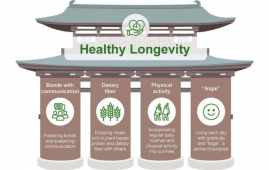

Recent advancements in immunosuppressive therapies necessitated updates to the prevention and management guidelines for hepatitis B virus reactivation (HBVr). Published in Gastroenterology, these new recommendations focus on tailored risk management, antiviral prophylaxis, and monitoring strategies for patients at risk.
Understanding HBV Reactivation
HBVr occurs when HBV activity resurges due to suppressed immune defences. High-risk groups include those on immunosuppressive therapies, particularly B-cell-depleting agents. Notably, HBsAg-positive individuals face greater reactivation risks compared to those with resolved HBV infection.
Why Update Guidelines?
Since the American Gastroenterology Association’s (AGA) 2014 guidelines, immunosuppressive treatment options have expanded, including therapies like immune checkpoint inhibitors and CAR-T cell therapies. These updates reflect advancements, ensuring clinicians provide evidence-based care.
Key Recommendations
- Risk Stratification
Patients are categorized into low, moderate, or high-risk groups based on HBVr likelihood. Updated risk assessments incorporate drug exposures and patient preferences. - Antiviral Prophylaxis
- Strongly recommended for high-risk individuals.
- Start prophylaxis before risk-associated treatments and continue for 6-12 months post-treatment.
- Resistance-averse antivirals are emphasized.
- Monitoring for Low-Risk Patients
For those at low risk, periodic monitoring of HBV viral load and ALT levels (every 1-3 months) is recommended as an alternative to prophylaxis. - Universal Screening
Testing for HBsAg, anti-HBsAg, and anti-HBc is advised for all adults. Those with positive results should undergo HBV DNA testing to assess viral activity.
Practical Implications
The guidelines distinguish between strong and conditional recommendations, accommodating patient values, healthcare costs, and risk tolerance. This nuanced approach empowers clinicians and policymakers to balance preventive strategies with patient-specific needs.
Future Directions
Cost-effectiveness analyses and centralized databases for HBV serological results could further refine risk categorization, enhancing equitable care. These guidelines set a foundation for proactive HBVr management amidst evolving medical landscapes.
More Information: Ali, F. S., Nguyen, M. H., Hernaez, R., et al. (2025). AGA Clinical Practice Guideline on the Prevention and Treatment of Hepatitis B Virus Reactivation in At-Risk Individuals. Gastroenterology. doi:10.1053/j.gastro.2024.11.008.
more recommended stories
 How Soybean Oil Impacts Weight Gain and Metabolism
How Soybean Oil Impacts Weight Gain and MetabolismWhy Soybean Oil May Affect Metabolism.
 New Malaria Prevention Insights From African Biostatistics
New Malaria Prevention Insights From African BiostatisticsHow New Data Is Reframing Malaria.
 World Summit Outlines Core Principles for Healthy Longevity
World Summit Outlines Core Principles for Healthy LongevityWhy Healthy Longevity Demands a New.
 Gut Immune Cells and Long-Lasting Antiviral Protection.
Gut Immune Cells and Long-Lasting Antiviral Protection.Breakthrough Findings on How Gut Immune.
 Mild Pancreatic Duct Dilatation Signals Higher Cancer Risk
Mild Pancreatic Duct Dilatation Signals Higher Cancer RiskEarly Structural Changes Offer Critical Clues.
 Ultra-Processed Foods in Mediterranean Youth: Risks
Ultra-Processed Foods in Mediterranean Youth: RisksThe Mediterranean region is widely recognized.
 Intensive mind-body retreat rapidly alters brain function
Intensive mind-body retreat rapidly alters brain functionAn intensive mind-body retreat combining meditation,.
 Longevity Gene May Extend Lifespan Without Strict Diets
Longevity Gene May Extend Lifespan Without Strict DietsThe search for safe and realistic.
 Cholesterol-Lowering Drugs May Help Reduce PFAS Levels
Cholesterol-Lowering Drugs May Help Reduce PFAS LevelsPer- and polyfluoroalkyl substances (PFAS) continue.
 Citrus and Grape Compounds Help Prevent Type 2 Diabetes
Citrus and Grape Compounds Help Prevent Type 2 DiabetesA new clinical trial highlights the.

Leave a Comment